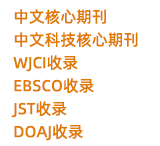



基于SWAT模型的合理亚流域划分和径流模拟
喻晓 马孝义 蔡朵朵
基于SWAT模型的合理亚流域划分和径流模拟
The Reasonable Sub-watershed Delineation and Runoff Simulation Based on SWAT Model
| {{custom_ref.label}} |
{{custom_citation.content}}
{{custom_citation.annotation}}
|
/
| 〈 |
|
〉 |